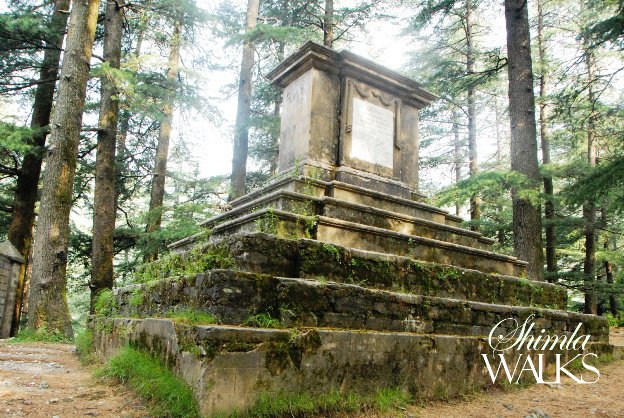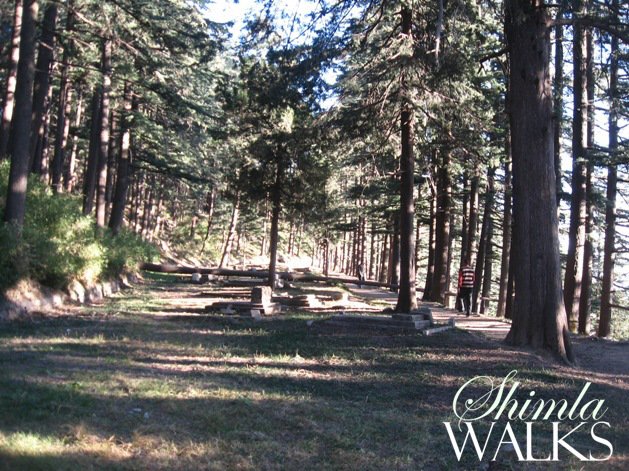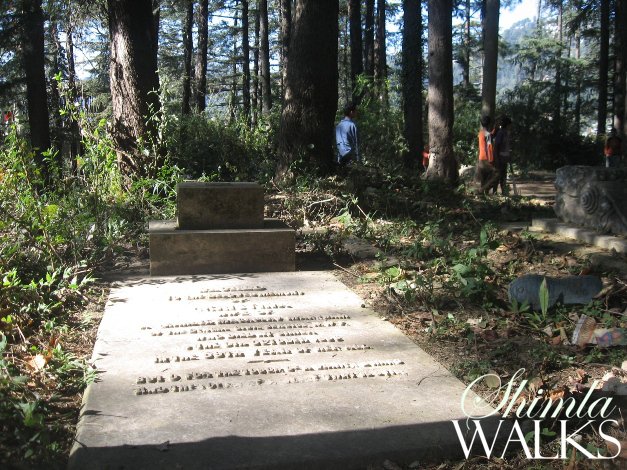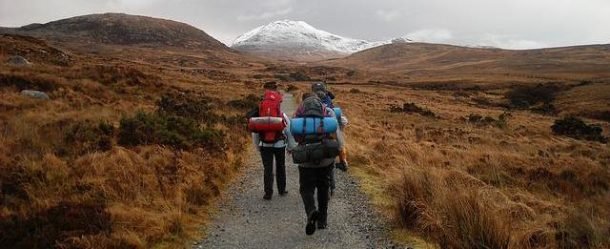As Shimla grew to its new dimensions the need of Cemeteries in Shimla aroused too. The British had started moving up to the hills from 1822 onwards. By 1830 the European population of the town had grown from one, which was Captain Kennedy, to nearly a few hundred people. They made everything here that was essentially required to lead a smooth and peaceful life.
Stories behind the cemeteries in Shimla
A large number of Brits, looking for their family history have already contacted us to help them find their family history. If you are looking for some of the Burial records please contact us and we shall try our best to have that available for you. When British came to Shimla in early 19th century they had never thought that they will be leaving a legacy by developing such a lovely town in these hills.
At this place there used to be just a small village with about 12 or 15 thatch roof houses called Shayamala. British liked the place so much that at the beginning of the second half of 19th century, when the Mutiny was just over and everything was transferred to the Crown, they decided to use Shimla, then Simla, as their summer capital. Shimla, was more central and the climate, of course, resembles England. And since then there was no looking back for this British Himalayan Town. By that time many had already come and constructed there summer houses here. Many Cemeteries also came into existence.
Cemeteries in Shimla
All of these old cemeteries were started by the Britishers. One of them is still in use and is used by the Indian Christians. If you are looking forward to these, we have compiled the following list for you.
#1 The Portmore Cemetery
The first cemetery was started in 1827 near Oakover, just above Portmore, then a famous nursing home. Now Portmore is a government school for girls. The town was growing rapidly so due to the close proximity, this Cemetery was closed in 1840. A part of that is still there. Now it remains buried in a group of large number of houses built around.
If one looks down behind the rain shelter to the left, just below the Oakover, now the residence of the Chief Minister of Himachal Pradesh, one can spot an old cross that confirms the presence of some graves. Till 1825 there was no development in its vicinity except a few houses and this small deserted graveyard used to be a peaceful spot. But then a number of houses started mushrooming up in the surroundings and the cemetery got buried in the cluster.
#2 A Lost Cemetery
The second Cemetery in Shimla existed just below the present bus station. It was started immediately after the Portmore Cemetery was stopped and remained in use till 1852. It had graves dating back to the 19th century. Below to this there is a Railway Museum which has been built in the name of Bhalku Baba, a shepherd who had helped a lot Mr. Harrington the Chief Engineer of Kalka – Shimla Railway in finding the route to lay the railway track. Hotel Rajdoot and the office of the Director of Education stands on the grounds of the cemetery now.
There used to be an old house here called ‘Glen Hogan’ that was owned by one Mr. William Hogan of Shimla, a clerk in the office of Commander-in-Chief. He had married seven times and every time lost his wife. His wives were buried in the courtyard of the house. Of them only one’s monument was traceable till in 1962 when this Cemetery got destroyed completely during the China War.
As per an old resident of Shimla ‘The cemetery was very neat and well-kept by a caretaker till the beginning of 1960s. Plenty of violet flowers bloomed during spring. The boundary walls of the cemetery were damaged due to earthquake in 1952. After this the decline started when antisocial elements and some homeless people started encroaching the land and indulging in vandalism by stealing the wrought iron decorations and marble headstones.
It met its end after the 1962 India China war which saw a large number of Tibetan refugees setting up their tents there. Till recently it was a shantytown of Tibetans. No sign of it remains now and no one remembers it. We feel sorry for the ones whose remains lie beneath the houses of people who have no idea what used to be there.
#3 Kanlog Cemetery
The third Cemetery of Shimla and perhaps the largest one was started in 1850 just above the Old Brewery. There is no record of actual date of the commencement of the cemetery but it is mentioned in the records that the official inauguration was done by Bishop Wilson and Mileman of Calcutta Diocese in 1852.
The Cemetery lies in a beautiful spur of dense and towering Cedars but the constant growth of Shimla town has surrounded it from all sides. Now the Shimla bypass road passes through it and along the outer wall, to the left, a massive construction of private houses has sprung up. Most of these houses have their rear windows opening to the cemetery ground but alas! Most of the graves are buried under the shabbily grown bushes.
The stems of these shrubs have ruptured the grave stones and damaged them. Some of the most prominent citizens of Shimla who took many important steps for the growth of the town in nineteenth century rest in peace here. Unfortunately there is no record of these burials and even their graves have decayed a lot. People enter the cemetery without any interruption and spend their good time here.
Recently Commonwealth War Grave Commission was able to trace 25 graves of war soldiers and repaired them. It was really difficult for them trace these graves as they found that the stones had been vandalized, broken or laid away from the grave. Rest of the buried are still waiting for someone to come and show them a ray of hope.
#4 Nun’s Graveyard

Another Cemetery of Shimla is a Private Graveyard of the Nuns of Convent of Jesus and Marry. It is known as ‘Nun’s Graveyard’ and lies just below the convent in a dense Cedar Forest. This Cemetery was started in 1872 and even now is fenced with a high cemented wall with a grand gate installed at its front. The peace here is disturbed the heavy wind that moves the iron doors of the gate and it creeks and bangs against the wall. It looks eerie and one gets scared on this sound but this is the only cemetery in Shimla that is well kept and the grave stones are in the right condition.
I think that the meaning of the three letters RIP mentioned on every grave have a lot of meaning here as the dense forest, decorated walls and odour of majestic Cedars are the best place for the dead. Near the gate there is a large Cenotaph of Colonel Parker of Bengal Army who died on 27th April 1837. This was erected at the behest of Colonel Tapp, Superintendent of Hill States.
#5 Sanjauli Cemetery
The fifth one is a Cemetery located at the other end of Sajauli, a suburb of Shimla. Commonly known as Sanjauli Cemetery, this cemetery in Shimla is now used by the Indian Christians. Like many other cemeteries, anywhere, the condition of this cemetery is also miserable. There used to be a gate that remained open for general public and it had become a common place for everyone.
A few years ago British Association of Cemeteries of South Asia (BACSA) erecetd a wall around it and a gate was installed to protect the property. The caretaker lives just opposite the gate and furnishes key on demand. But still people living in the vicinity enter the cemetery from various sides.
Originally it was started in 1921. Team of Shimla Walks visited this cemetery for the first time on 6th November 2008 to pick up the information from the monuments. This is to help those who are looking for their roots in India. I believe that many of the British who are buried in Shimla cemeteries must be having their descendants in Britain. We were really upset to see the miserable condition of the monuments. They have been suffering the neglect of the authorities and are really in bad shape.
Most of the monuments have lost their information, the stones have been vandalized, shrubs are growing around them and many of them are buried under the moss, grass and mud. We found empty liquor bottles, chips packets, cigarette packets etcetera on the graves. The crosses lay broken next to the monuments and it is difficult to associate them to their respective graves. We were able to collect information only from 146 monuments. To do this first we had to assemble the pieces of the stones of the graves from here and there.
Cemeteries hold a lot of History in them and Shimla is a town that holds marvellous history of the British India. Cemeteries in Shimla are one of the best sources to fetch information about Shimla’ Past. So it is sincerely required to maintain these monuments and protect them for the generation next.
[textured_top_area_full_width]
Shimla Walks conducts a Cemetery Walking Tour covering all the major Cemeteries in Shimla and brings you the history in platter. To go for a nature walk while looking for your roots you may visit our exclusive product Cemetery Lanes
[/textured_top_area_full_width]




I have been to shimla but never heard about this places.
Thankx For sharing
Thanks a lot Lovlesh. Please contact us next time when you are in Shimla. I am available at 9459519620 and 9817141099
Hi, I write to you on behalf of Eicher Goodearth Guidebooks, we are currently researching on Shimla. This is a wonderful section and we would like to use one of your photographs crediting you in the book. Do let me know what you think!
Best wishes,
Urmimala
Apparently one challenge is to find the grave of Mary Anne Grindall Hume (Mrs A. O. Hume) who died in 1890.
http://www.tribuneindia.com/news/sriram-mehrotra-lone-crusader-for-hume/15577.html
These are some interesting things to look for in cemetery area. I think there is also a place called cemetery along with sanjauli area.
Camel’s back cemetery in Mussorie is simi;lar and it goes down vast swathes of land ……Awalk around the Simla cemeteries…..Kindly post details
I spent a lot of time to find something like this
This is really useful, thanks.
Thanks, it is very informative
Thank you for the great post